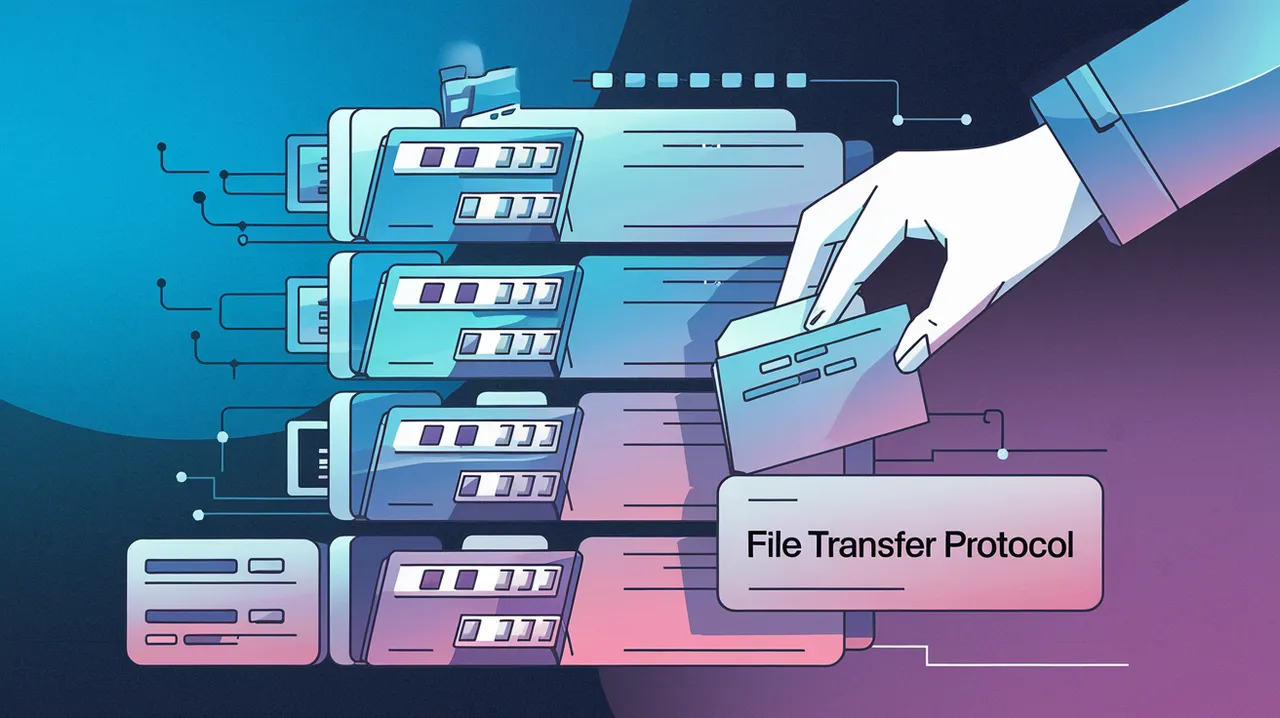FTP

In the realm of website management, the effective transfer of files is a paramount concern. FTP, or File Transfer Protocol, offers a streamlined solution for uploading files to websites or transferring them between multiple sites.
Notably, this protocol is frequently employed for uploading WordPress files to a server, enabling users to manipulate files and folders on their website with ease.
Previously, we have covered what is FTP and how to make use of it to maintain any types of websites and servers, especially WordPress.
By establishing a connection between an FTP client software and an FTP server, individuals gain direct access to their website’s files, facilitating troubleshooting of issues such as problematic plugins or files.
While browser-based file manager applications are available as an alternative, FTP clients are often favored for their reliability and user-friendly nature.
In this article, we aim to provide a comprehensive understanding of FTP and its role in simplifying WordPress file uploads, while also recommending various FTP client software options suitable for Windows, Mac, and Linux systems.
Highlights
Hide- FTP is a fast and simple way to upload files from your computer to your website.
- It can also be used to transfer files from one website to another.
- FTP is commonly used to upload WordPress files to a server.
- Troubleshooting with FTP can help you resolve WordPress problems and regain access to your admin area.
The Basics of FTP for WordPress
The basics of FTP for WordPress involve the use of an FTP client software to connect to an FTP server provided by web hosting providers, allowing users to upload, manage, and troubleshoot files on their WordPress websites.
FTP is a powerful tool that enables users to upload media files, manage themes, and plugins on their WordPress websites.
By connecting to the FTP server using an FTP client, users can easily upload media files such as images, videos, and audio files to their websites.
Additionally, FTP allows users to manage themes and plugins by uploading and installing them directly to their WordPress websites.
It provides a reliable and efficient way to troubleshoot issues with themes or plugins by allowing users to make changes or remove problematic files directly from the server.
Overall, FTP is an essential tool for WordPress users who desire power and control over their website’s files and functionality.
Connecting to an FTP Server for WordPress File Uploads
To connect to an FTP server for uploading files to a WordPress website, users need to utilize an FTP client software and establish a connection between the client and server using the FTP protocol.
This connection enables users to manage WordPress files via FTP, allowing them to perform tasks such as uploading, moving, renaming, deleting, and editing files and folders on their website.
By connecting to the FTP server, users can access the files on their website and make necessary changes or troubleshoot any issues that may arise.
While there are alternatives such as browser-based file managers, FTP clients are often preferred for their reliability and ease of use.
Recommended FTP client software includes WinSCP, Cyberduck, Transmit, Free FTP, and FileZilla.
These tools provide users with the power and control needed to effectively manage their WordPress files via FTP.
Troubleshooting WordPress Issues With FTP
Troubleshooting issues with WordPress can be facilitated by utilizing FTP to directly access and modify files on the website.
This method allows for a more in-depth examination and control of the website’s files, which can be beneficial when dealing with plugin management and theme issues.
Here are three ways in which FTP can help troubleshoot WordPress problems:
1. Identifying problematic files:
- By accessing the website’s files through FTP, you can pinpoint specific files that may be causing issues.
- This allows for targeted troubleshooting and the ability to remove or modify problematic files.
2. Restoring previous versions:
- FTP enables you to restore previous versions of files, which can be useful in reverting changes that may have caused issues.
- This feature provides a safety net and allows for experimentation without the risk of permanently damaging the website.
3. Making quick fixes:
- FTP allows for immediate access and modification of files, making it possible to quickly fix issues such as broken themes or malfunctioning plugins.
- This can save time and prevent any disruption to the website’s functionality.
